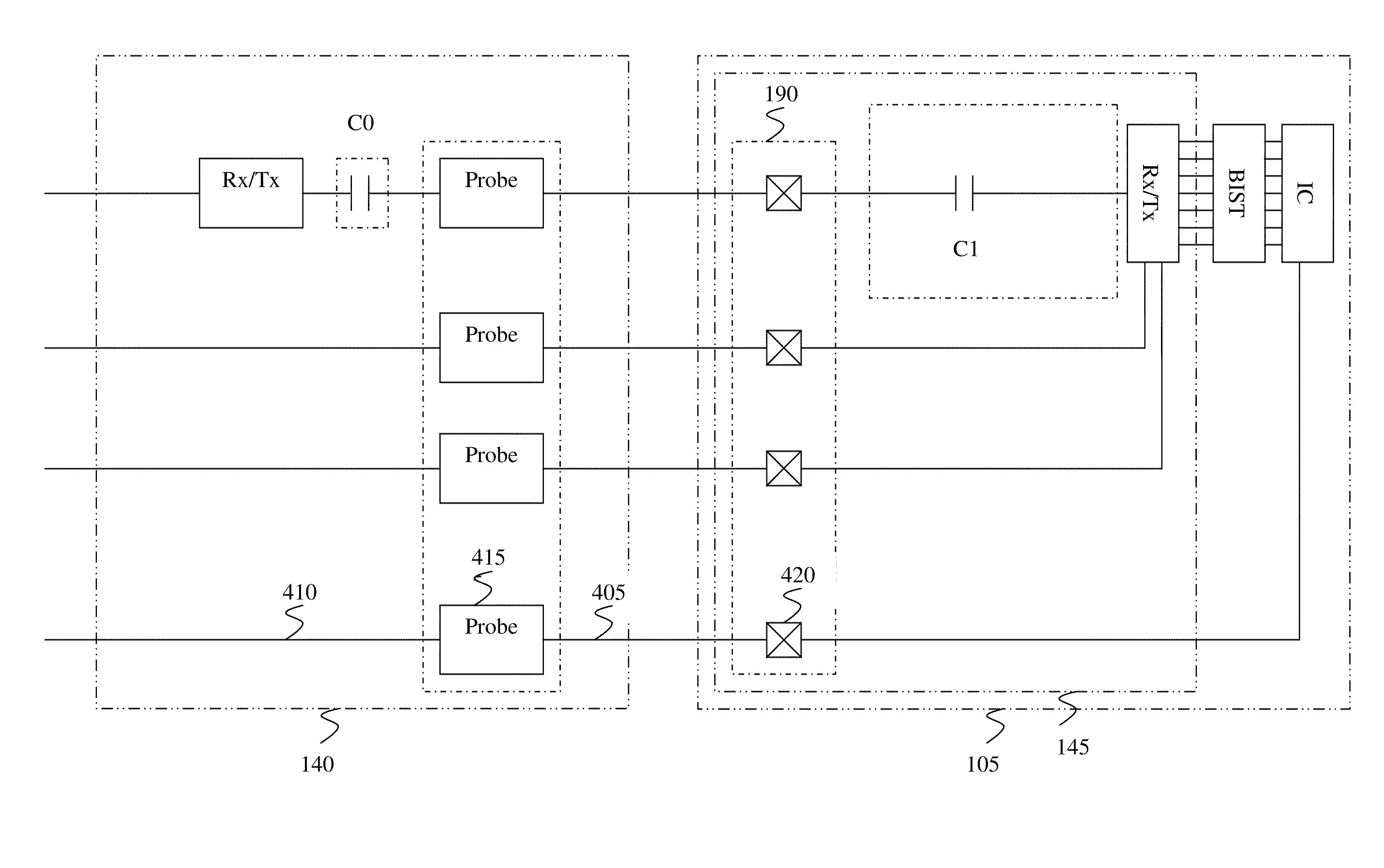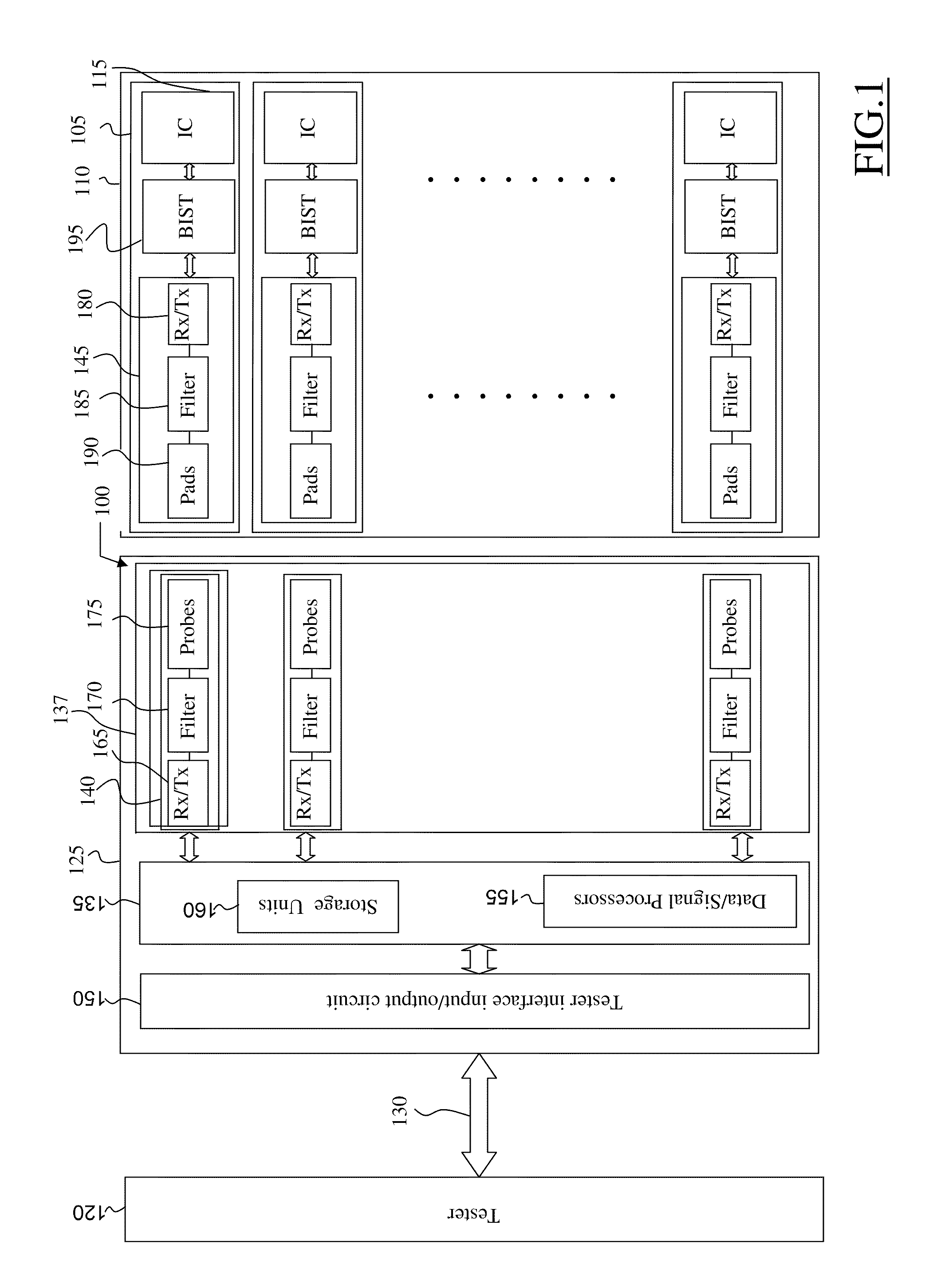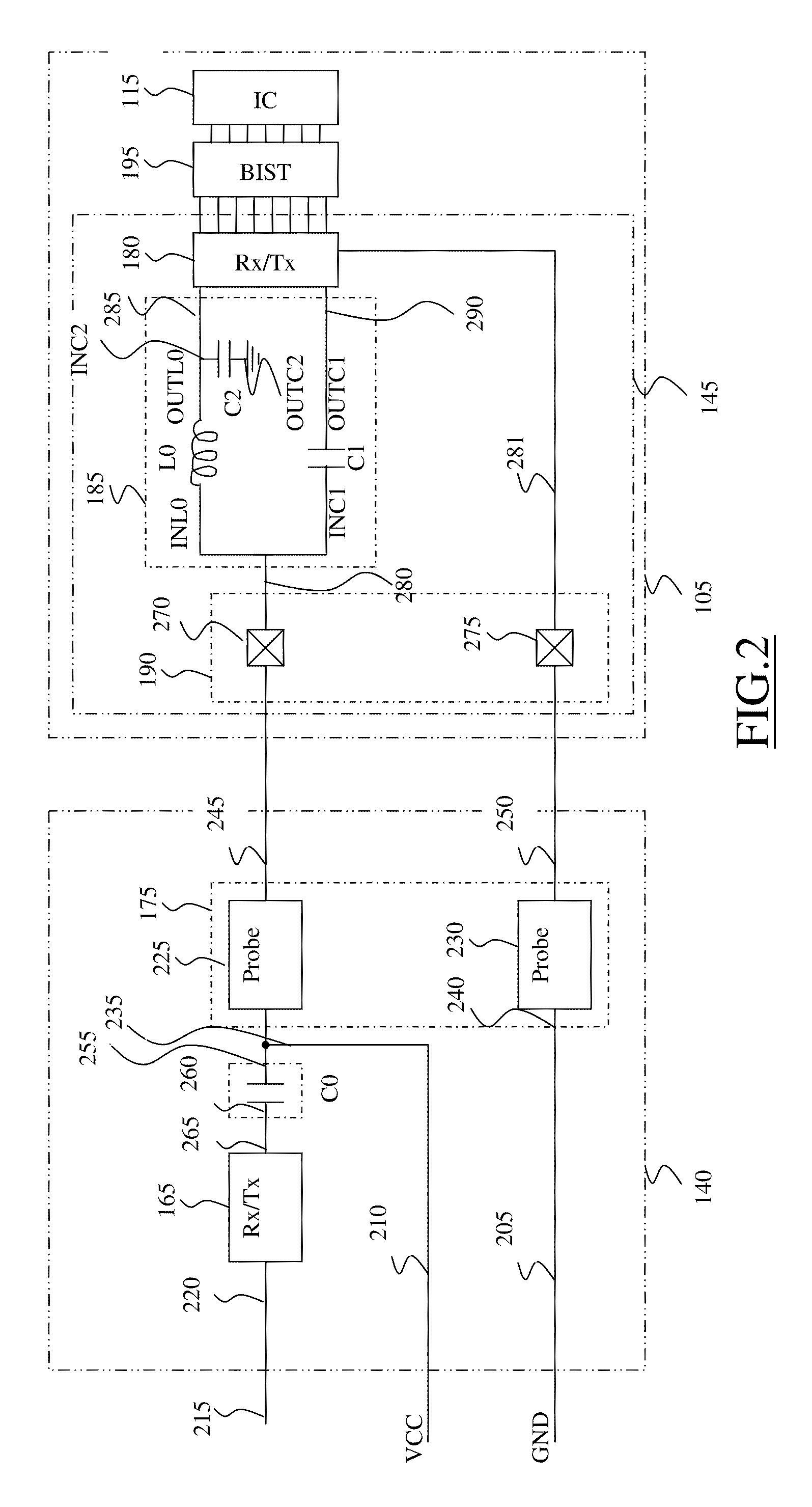Testing integrated circuits using few test probes
a technology of integrated circuits and test probes, applied in electrical testing, instruments, electrical apparatus, etc., can solve the problems of reducing the number of probes needed, reducing the number of input/output contact pads, and increasing the risk of scrubbing
- Summary
- Abstract
- Description
- Claims
- Application Information
AI Technical Summary
Benefits of technology
Problems solved by technology
Method used
Image
Examples
Embodiment Construction
[0044]Throughout the following description, identical or similar elements in the drawings are denoted by same reference numerals.
[0045]Referring to FIG. 1, a block diagram of a test system 100 according to an embodiment of the present invention is schematically shown. The test system 100 is adapted to perform the wafer-level testing of a plurality (for example, hundreds) of IC dies 105 belonging to a semiconductor wafer 110, prior to the dicing thereof into individual chips.
[0046]The specific type of IC 115 integrated on the dies 105 is not limitative to the present invention; in particular, and merely by way of example, the ICs 115 may be or include memory devices, microprocessors or microcontrollers, Digital Signal Processors (DSPs), digital logic circuits, Application Specific Integrated Circuits (ASICs), Field Programmable Gate arrays (FPGAs), analog circuits, RE circuits, MEMS (Micro ElectroMechanical Systems).
[0047]For testing the ICs 115 on the dies 105 in order to assess the...
PUM
 Login to View More
Login to View More Abstract
Description
Claims
Application Information
 Login to View More
Login to View More - R&D
- Intellectual Property
- Life Sciences
- Materials
- Tech Scout
- Unparalleled Data Quality
- Higher Quality Content
- 60% Fewer Hallucinations
Browse by: Latest US Patents, China's latest patents, Technical Efficacy Thesaurus, Application Domain, Technology Topic, Popular Technical Reports.
© 2025 PatSnap. All rights reserved.Legal|Privacy policy|Modern Slavery Act Transparency Statement|Sitemap|About US| Contact US: help@patsnap.com



